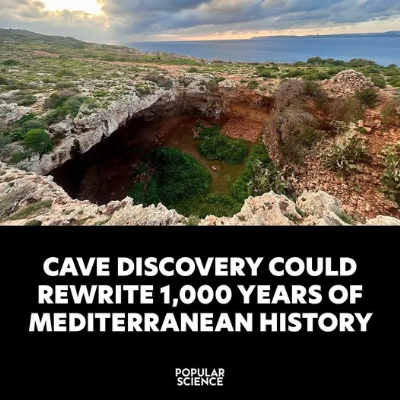
©
Нові археологічні дані з печери Латнія, розташованої в районі Меллієха, свідчать про те, що люди населяли Мальту приблизно 8 500 років тому — на понад тисячу років раніше, ніж вважалося раніше. Це відкриття здійснила команда з Університету Мальти спільно з міжнародними науковцями. Радіовуглецеве датування знайдених органічних решток та кам’яних знарядь праці вказує на присутність людей на острові ще близько 6500 року до н.е., у ранньому неоліті. Провідна археологиня докторка Елена Велла заявила: “Це змінює наше розуміння найдавнішої історії Мальти. Нові докази вказують, що острів міг слугувати пунктом зупинки для морських культур, які рухались між Сицилією та Північною Африкою.” Серед знахідок — мікролітичні крем’яні знаряддя, залишки вогнищ, а також сліди пилку та тварин, що дозволяє відтворити екологічні умови того часу. Геоархеолог доктор Мартін Гріма з Інституту Макса Планка зазначив: “Ці дані доводять, що морські пересування Середземним морем почалися значно раніше, ніж вважалося.” Печеру вже оголошено національною пам’яткою, а розкопки продовжаться протягом літа. Це відкриття може суттєво вплинути на сучасні уявлення про міграції ранніх людей у Середземномор’ї.
Discovery in Mellieħa Rewrites the History of Malta’s Settlement
New archaeological findings from the Latnija Cave, located in the Mellieħa region, suggest that humans inhabited Malta approximately 8,500 years ago — more than a thousand years earlier than previously believed. The discovery was made by a team from the University of Malta in collaboration with international researchers. Radiocarbon dating of organic remains and stone tools indicates human presence on the island as early as 6500 BCE, during the early Neolithic period. Lead archaeologist Dr Elena Vella stated: “This changes our understanding of Malta’s earliest history. The new evidence suggests the island may have served as a stopover for maritime cultures moving between Sicily and North Africa.” Among the discoveries were microlithic flint tools, hearth remnants, as well as pollen and animal traces — all helping to reconstruct the environmental conditions of the time. Geoarchaeologist Dr Martin Grima of the Max Planck Institute noted: “This evidence proves that maritime movements across the Mediterranean began much earlier than previously assumed.” The cave has already been declared a national heritage site, and excavations are set to continue throughout the summer. This discovery could significantly reshape modern views on early human migration in the Mediterranean region.
2347